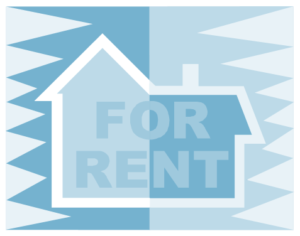Suburb backs off restrictions on homeowners’ rental property rights
Brooklyn Center, Minn.—For the second time this year, a Twin Cities suburb has turned back a controversial proposal to curtail one of its residents’ fundamental property rights—a homeowner’s freedom to rent his house.
Brooklyn Center had appeared poised to become the fifth Minnesota city to restrict property owners’ rental rights, joining Mankato, Northfield, West St. Paul and Winona.
But the Brooklyn Center City Council on Monday unanimously rejected an ordinance that would have banned most property owners from renting out their homes by limiting rental licenses to 30 percent of houses per block. South St. Paul city councilors dropped a 10 percent limit on rental properties back in January in the process of adopting new regulations.
“Who am I to say what you can do with the property that you own? That’s the biggest issue,” said Brooklyn Center City Councilor Kris Lawrence-Anderson, who reversed her position. “…It comes down to from my perspective, it’s Big Brother. We shouldn’t be telling people what they can do.”
The city council’s action marked a surprise victory for an unusual coalition that formed to oppose the measure, including the libertarian Institute for Justice, Minneapolis Area Association of Realtors and liberal Mid-Minnesota Legal Aid.
Opponents argued the so-called rental cap not only violates a centuries-old bedrock legal right, but also sends a signal that renters are second-class citizens in the first-ring suburb, population 30,500.
“It’s a property rights issue not only for the landlord as a homeowner, but also for renters because having the ability to enter into a lease with a property owner is a property right,” said Anthony Sanders, an Institute for Justice attorney who has sued Winona over the constitutionality of rental caps. The Minnesota Supreme Court did not rule on the issue due to a technicality.
Winona became the first city in the country to impose a limit on rental properties in 2005. But what started out as a concern over the proliferation of student rentals in college communities has taken on a life of its own.
The issue surfaced in Brooklyn Center following a wave of foreclosures due to the recession. Rental properties currently comprise six percent of the city’s housing stock, but the number of licensed rental properties has tripled from 250 in 2008 to about 750 in 2016. Proponents of the ordinance say the volume of police complaints and code violations has escalated in some neighborhoods.
Yet a grassroots campaign led by local realtors warned the ordinance would undermine property values and make housing less affordable for many families in the long run.
“In addition to property rights, our concern overall is viability of the community. People need stable and affordable rentals in order to get up to a position of where they can move up to home ownership and this will harm affordability,” said Julia Parenteau, Vice President for Public Affairs at the Minneapolis Area Association of Realtors.
The city also received a letter from Mid-Minnesota Legal Aid hinting at potential litigation. Legal Aid estimates more than 1,400 low income minority renters in Brooklyn Center already spend more than they can afford on rent or live in overcrowded conditions.
“By eliminating rental options for these families, the proposed ordinance can only make this situation worse, adding to the number of poorly housed low income minorities,” Mid-Minnesota Legal Aid Supervising Attorney Lael E. Robertson said in the letter. “The ordinance therefore makes housing unavailable in a way that disproportionately burdens racial and ethnic minorities protected by the Fair Housing Act.”
The issue came full circle when Mayor Tim Willson and two other city councilors reversed their support for the restrictions in a 5-0 vote to kill the ordinance.
“In my mind, taking it off the table is a good thing. I think we should at this point vote it down to some future time perhaps,” Mayor Willson said at the June 13 city council meeting.